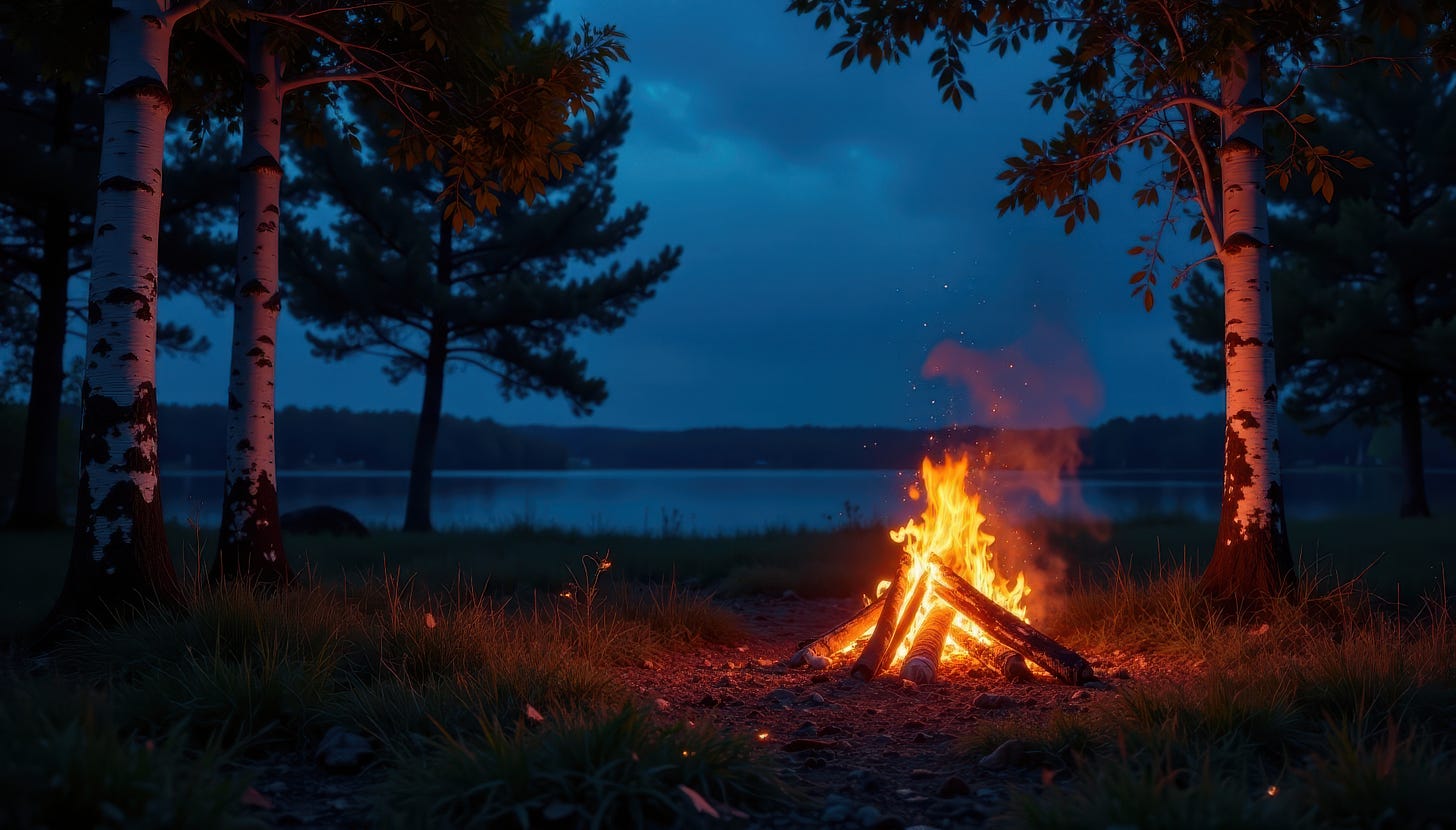🔥 Finnish Midsummer – Light, Legacy, and the Living Tradition
A personal journey through the light-filled rituals, fireside traditions, and quiet magic of a Finnish Midsummer.
The scent of birch, the soft hiss of the sauna stove, and sunlight that refuses to set, this is Finnish Midsummer. More than just a holiday, it’s a deep-rooted tradition where nature, fire, and community come together. Whether by the lake at a summer cottage or in a city park, Midsummer is a celebration of light, legacy, and what it means to be Finnish.
The Essentials of a Finnish Midsummer — from Luhanka, by Lake Päijänne
Midsummer for me has always meant one thing: returning to Luhanka, to my parents’ summer place nestled along the shores of Lake Päijänne. There’s a rhythm to those days, almost sacred, that begins the moment I step out of the car and smell the birch trees swaying in the breeze.
The Bonfire (Kokko)
By the evening, we’ve gathered wood down by the shore. The kokko isn’t just tradition, it’s anticipation.
I remember helping my father build it as a boy, stacking the logs, dried branches, and old wood carefully, knowing that when the match is finally lit and the fire catches, something shifts. You feel it in your chest, not just heat, but memory. The fire draws neighbours from across the water. We sit quietly at first, then begin to talk, laugh, and watch the light bounce off the lake.
The Sauna
The sauna is already warming up before dinner. The scent of smoke and tarred wood mixes with the lake air. We take turns going in, bringing the vihta — a fresh bundle of birch twigs. Something is healing about it: the rhythm of whisking, the birch oil caressing the body from the leaves, the silence, the moment when you step out and run straight into the cold lake. That first plunge — it’s always a shock, no matter how many summers have passed.
Grilling & Food
Our Midsummer table is never fancy, but it’s always fresh. New potatoes, just dug from the garden, dill, butter, maybe some smoked perch, or cured salmon, enjoyed with dry white wine. As a dessert, fresh, open-field strawberries are accompanied by rich vanilla ice cream. The food isn’t about impressing anyone. It’s about taste, tradition, and sharing.
Midsummer Magic
My younger sister would pick seven different flowers from the field and place them under her pillows, hoping to dream of our future love. It was a quiet ritual, always done half-seriously, half-hopeful. There were also games — races to the dock, jumping contests into the lake, someone trying (and failing) to stay up until the sun dipped low enough to call it night.
Dancing & Music
Sometimes a radio would play old iskelmä in the background, and someone might hum along. Other years, we’d put on a waltz and sway barefoot on the dock, just for fun. In Finland, music at Midsummer doesn’t need to be loud — it just needs to feel familiar.
Cottage Life (Mökkeily)
This is where time slows down. We gather on the deck for coffee in the morning and sit without speaking for long stretches, watching the water ripple. There’s no rush — no need to check a phone or clock. Just the hum of bees, a boat engine in the distance, and the occasional call of a loon. It’s still the best way I know to reset.
When the Cottage Isn’t an Option: Seurasaari’s Midsummer
Not everyone can escape to the countryside, but Helsinki offers its kind of magic.
Every year, the Seurasaari Midsummer Bonfires (Juhannusvalkeat) provide a deeply authentic alternative in the capital. The wooded island transforms into a living snapshot of rural Finnish tradition:
A traditional bonfire is lit by a wedding couple in folk costume, a symbolic act tied to fertility and love.
Live folk music and dances fill the summer air as the Midsummer pole is raised. A tradition held in West Finland and Åland archpelago
.
Children follow the “Magic Path”, filled with storytelling, midsummer spells, and crafts.
The setting, an open-air museum of historic wooden buildings, gives the evening a timeless, rooted feel.
If you can’t leave the city, Seurasaari brings the countryside to you.
From Ukko to Johannes: Midsummer's Origins
Long before it became a church holiday, Midsummer was celebrated as Ukon juhla, a festival honoring the old weather and fertility god, Ukko. Bonfires were lit to secure a good harvest and healthy livestock. As Christianity spread, the holiday became associated with John the Baptist — hence the Finnish name Juhannus, a folk version of Johannes.
Traditions blended: churches held services, and villages kept their fire rituals. And through it all, the celebration remained tied to nature, community, and the turning of the sun.
The Legacy Lives On
As a Finn, I’ve come to see Midsummer not just as a celebration, but as a seasonal anchor. It reminds us to pause, to be present, and to share time, around the fire, in the sauna, at the table.
Whether you're watching the bonfire from a dock in the archipelago or dancing in Seurasaari under the midnight sun, Midsummer carries the same message: light is worth celebrating. And some traditions — the quiet ones, the warm ones, the shared ones — are always worth keeping.





